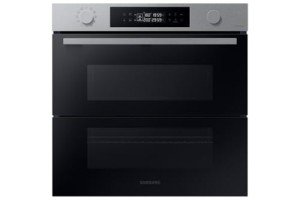15 Weird Hobbies That Will Make You More Successful At Builtin Oven

The Comprehensive Guide to Built-In Ovens: Features, Benefits, and FAQs
Built-in ovens are a popular choice for modern kitchen areas, using flexibility, performance, and a sleek style that incorporates effortlessly into kitchen cabinetry. hob and built in oven package will explore the various aspects of built-in ovens, including their features, advantages, installation choices, upkeep tips, and responses to typically asked concerns.
What is a Built-In Oven?
A built-in oven is developed to be set up within kitchen cabinets and is available in various setups, such as single or double ovens. Unlike freestanding ovens, built-in designs provide a structured appearance and use more flexibility in kitchen style. They can be found in electric, gas, and steam options, catering to a variety of cooking choices.
Features of Built-In Ovens
Built-in ovens are packed with functions that boost cooking experiences. Here are some of the most typical features to consider:
| Feature | Description |
|---|---|
| Self-Cleaning | Many designs consist of a self-cleaning function that burns residue at heats, streamlining upkeep. |
| Convection Cooking | This feature utilizes a fan to distribute hot air, cooking food more uniformly and rapidly. |
| Smart Technology | Some ovens come equipped with Wi-Fi connection, enabling users to manage the oven remotely through smart device. |
| Multiple Cooking Modes | Consist of options such as baking, broiling, roasting, and air frying, providing versatility for different dishes. |
| Temperature level Probe | Keeps track of the internal temperature of food, making sure completely cooked meals every time. |
| Smooth Design Options | Available in numerous surfaces (stainless-steel, black, white) to match kitchen decoration. |
Advantages of Built-In Ovens
The installation of a built-in oven brings many benefits to any kitchen:
- Space Efficiency: Built-in ovens make the most of kitchen area, providing a tidy and orderly look without sacrificing performance.
- Boosted Cooking Performance: With sophisticated functions like convection cooking and precise temperature controls, built-in ovens often outperform traditional models.
- Style Flexibility: These ovens can be installed at eye level, permitting simple access without bending down, which can be especially useful for individuals with physical restrictions.
- Improved Resale Value: A properly designed kitchen with premium built-in appliances may interest prospective buyers, enhancing general residential or commercial property worth.
- Modification Options: Many brand names use personalized designs that fit the specific measurements and visual of individual kitchen areas.
Setup Options
When picking a built-in oven, understanding the installation options is important. Here are the most common setups:
- Single Built-In Oven: Ideal for smaller kitchens, these units offer enough area to cook a variety of meals concurrently, best for everyday cooking.
- Double Built-In Oven: Best matched for passionate cooks and large households, double ovens permit synchronised cooking at 2 different temperature levels, suitable for meals that need varied cooking methods.
- Combination Steam and Oven: A hybrid option that integrates the benefits of standard baking with steam cooking. This alternative is excellent for keeping wetness in foods, making it ideal for baking bread or roasting meats.
Upkeep Tips for Built-In Ovens
Maintaining a built-in oven is important for its longevity and ideal efficiency. Here are some useful maintenance suggestions:
- Regular Cleaning: Use the self-cleaning function when essential, and wipe down the exterior and interior surfaces routinely to prevent grease accumulation.
- Examine the Seals: Inspect the oven door seals for any wear or damage to ensure proper insulation and cooking effectiveness.
- Temperature level Calibration: Occasionally evaluate the temperature level precision using an oven thermometer, particularly if cooking times seem longer than usual.
- Ventilation: Ensure appropriate ventilation around the oven to prevent getting too hot, particularly for built-in designs that might be surrounded by kitchen cabinetry.
FAQs About Built-In Ovens
1. Are built-in ovens more expensive than freestanding models?Yes, built-in ovens tend to be more expensive due to their style, setup requirements, and additional functions. Nevertheless, their advantages can validate the expense in the long run.
2. Can you set up a built-in oven yourself?While some handy people may try to install a built-in oven, it is advised to work with a professional to make sure proper installation, ventilation, and safety requirements.
3. What is the typical life expectancy of a built-in oven?The common life-span of a built-in oven is around 10 to 15 years, depending on usage and maintenance. Regular care can help extend its durability.
4. Are built-in ovens energy effective?Many modern-day built-in ovens are designed with energy effectiveness in mind, incorporating functions like insulation and exact temperature controls that might reduce energy usage compared to older designs.
5. Can a built-in oven be fixed if it breaks?Yes, built-in ovens can frequently be fixed. It is a good idea to contact a licensed specialist for diagnoses and repair work to make sure safety and compliance with warranty agreements.
Built-in ovens are an outstanding addition to any modern kitchen, supplying a mix of design, functionality, and advanced cooking functions. With the best knowledge about their features, advantages, and upkeep, homeowners can make informed options to enhance their cooking experiences. As kitchen style patterns continue to develop, the built-in oven stays a staple for those wanting to blend looks with efficiency in their cooking spaces.

